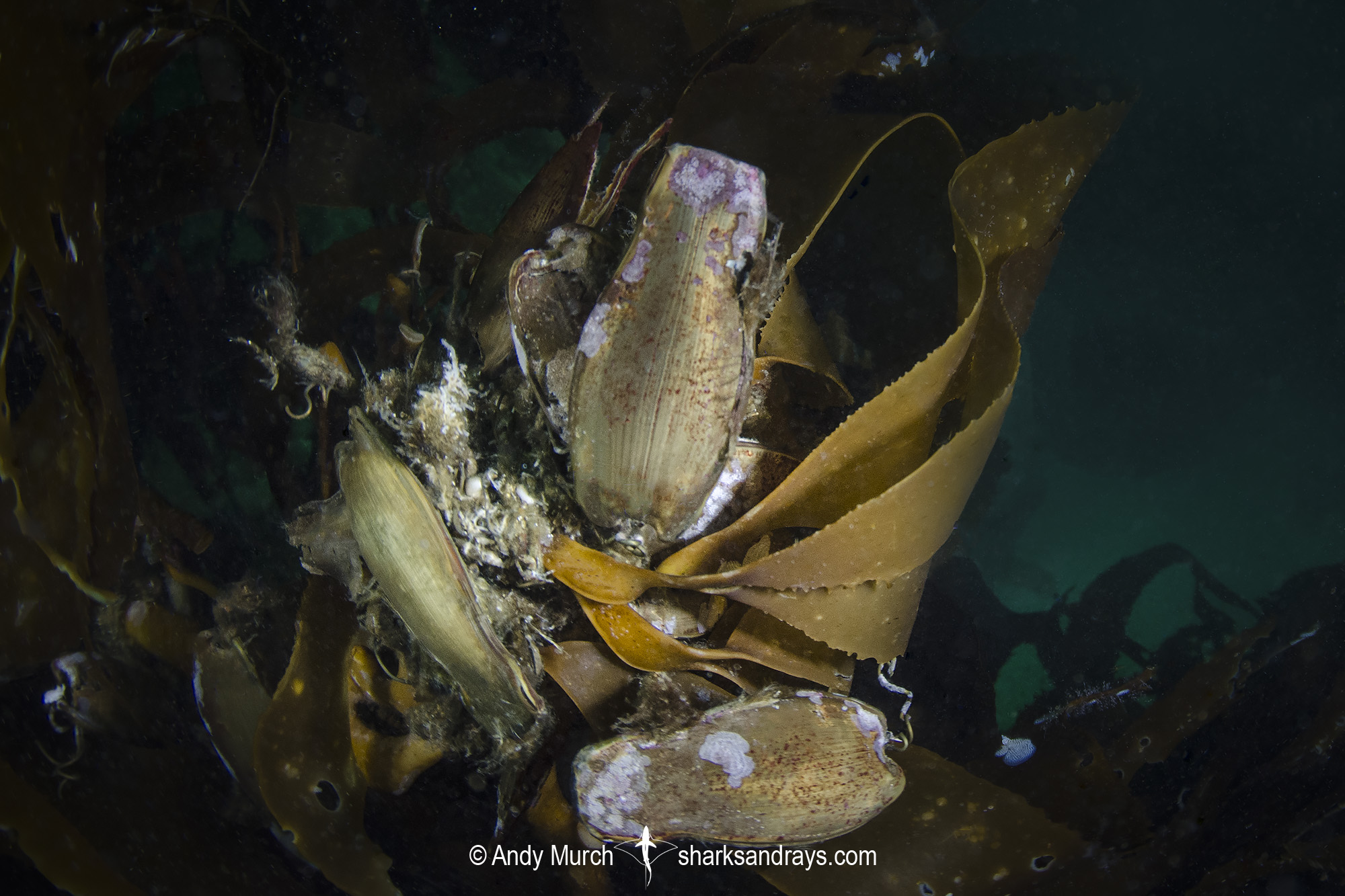Common names
Redspotted Catshark, Chilean Catshark.
Binomial
Schroederichthys chilensis.
Synonyms
Halaelurus chilensis, Scyllium brevicolle, Scyllium chilense.
Identification
Body slender. Snout very short and rounded. Mouth width about 2x snout length. First dorsal origin approximately level with pelvic fin insertion. Second dorsal fin level with middle of anal fin base. Dorsal fins approximately equal in size. Dorsal coloration light brown with large dark brown saddles and small black spots. Spots scattered; not corresponding to saddle shape. Lower half of 3rd saddle (saddle anterior to first dorsal), extends forward towards along flank.
Size
Maximum length 60cm.

Conservation Status
LEAST CONCERN
The reddspotted catshark is caught incidentally in gillnet and line fisheries in Chile and Peru, but is usually discarded. Post release mortality is high, but fishing pressure is low. There is a concern that kelp exploitation for agar production may be affecting this species’ ability to reproduce because the Chilean catshark usually wraps its eggs around Kelp fronds.

Habitat
A temperate water species. On or near the bottom in rocky reefs, kelp beds, estuaries, and sandy bays. Found from very shallow water to 100m. Most commonly encountered between 8-15m. Deeper in winter.
Distribution
Southeastern Pacific. The redspotted catshark ranges from Ancon in Peru to Chiloe in southern Chile.
Reproduction
Oviparous. Single egg per oviduct. Egg cases have long tendrils that the shark tangles around kelp fronds.
Diet
Diet mostly consists of small crustaceans and other invertebrates.
Behavior
Moves into deeper water during the winter.
Reaction to divers
Apparently unconcerned about predators, the Chilean catshark is very easy to watch closely as it swims slowly along the reef, or rests in crevices.
Diving logistics
Any inshore reefs between Santiago and Coquimbo are probably good places to look for this species. Research indicates they may be less abundant in the winter months when they apparently move into deeper water.
Perhaps one of the best places to dive with redspotted catsharks is at Las Tacas just south of Coquimbo in central Chile.
Divers staying in Coquimbo can find Chilean catsharks on night dives in the bay right in front of the dock of Bahia Sol Dive Lodge.
Similar species
Narrowmouth Catshark Distinguished by narrower mouth, proportionately longer snout, upper labial furrows longer than lower ones, and smaller saddles that do not extend along flank. Southern Chile and South Atlantic.










